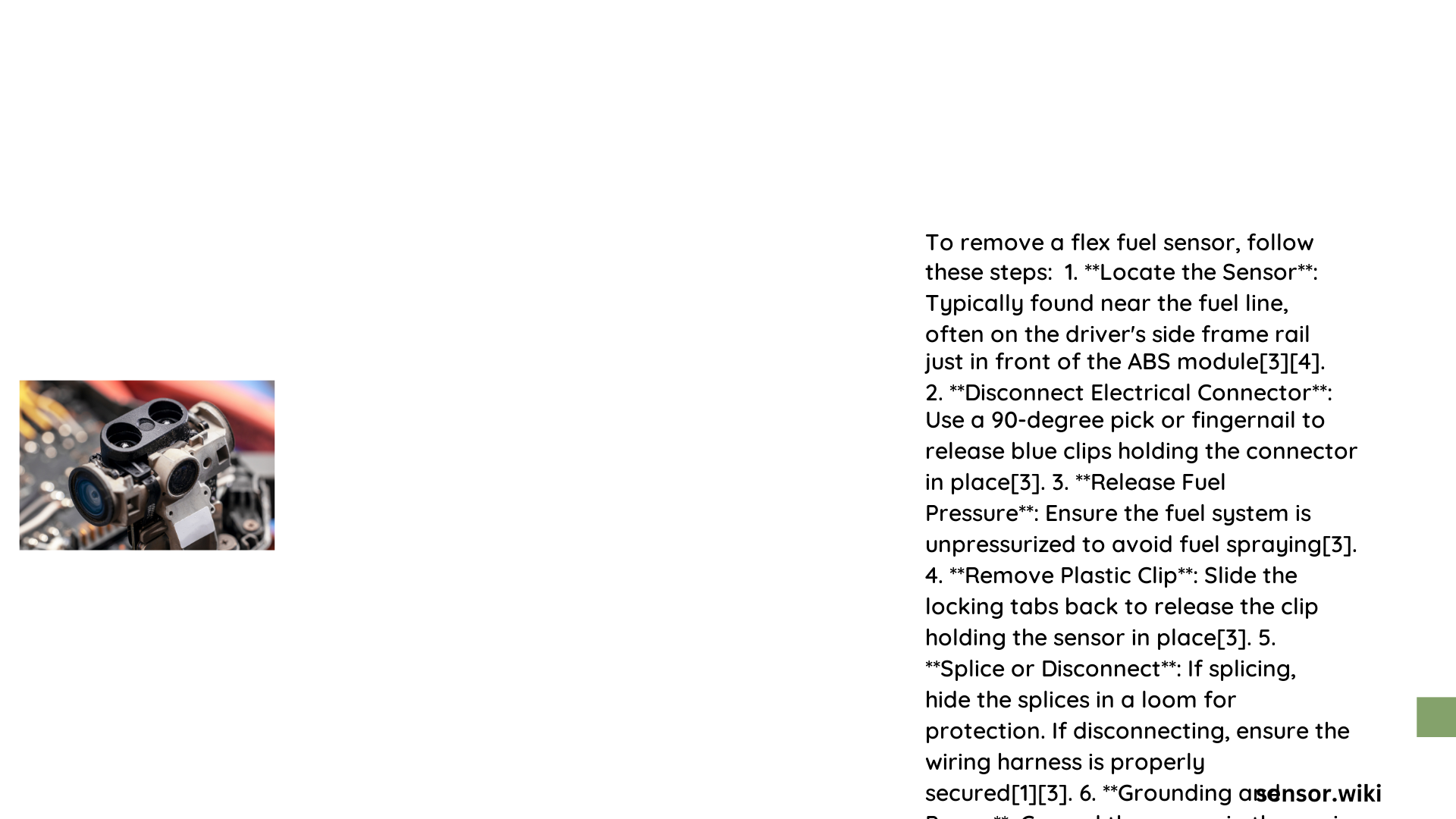Flex fuel sensor removal is a critical automotive maintenance procedure that requires precision, specialized tools, and careful handling. Vehicle owners and mechanics must understand the intricate process of disconnecting, extracting, and replacing these sensitive electronic components that monitor ethanol content in fuel systems. This comprehensive guide will walk you through each critical step, ensuring a safe and successful sensor removal without compromising your vehicle’s performance or fuel system integrity.
What Tools Do You Need for Flex Fuel Sensor Removal?
Before beginning the removal process, gather the following essential tools:
| Tool Category | Specific Tools |
|---|---|
| Disconnection Tools | Fuel disconnect tool, Hose clamp pliers |
| Bit Tools | Torx bits, 10mm socket |
| Protective Equipment | Safety glasses, Protective gloves |
| Containment Tools | Clean rags, Fuel collection container |
Where Is the Flex Fuel Sensor Located?
The flex fuel sensor is typically positioned:
– Near the fuel line
– Close to the fuel tank
– Along the primary fuel routing path
How to Safely Remove the Flex Fuel Sensor?

Step 1: Preparation and Safety
Before starting the removal process:
– Ensure the vehicle is in a well-ventilated area
– Disconnect the vehicle’s battery
– Wear appropriate personal protective equipment
– Have a fire extinguisher nearby
Step 2: Fuel Line Disconnection
- Locate the fuel line connected to the sensor
- Use the fuel disconnect tool to carefully separate the line
- Place rags and a container underneath to catch potential fuel spillage
- Be prepared for residual fuel pressure
Step 3: Electrical Connector Removal
- Carefully unplug the electrical connector
- Inspect the connector for any signs of damage or corrosion
- Gently wiggle the connector to ensure a clean disconnect
Step 4: Physical Sensor Extraction
- Use appropriate tools to remove mounting bolts
- Carefully pull the sensor straight out
- Avoid twisting or applying excessive force
What Are Common Challenges During Flex Fuel Sensor Removal?
Potential challenges include:
– Corroded connections
– Tight mounting locations
– Unexpected fuel system pressure
– Delicate electrical connections
Troubleshooting Tips
- Use penetrating lubricant for stubborn connections
- Work slowly and methodically
- If resistance is encountered, stop and reassess
- Consider professional assistance if uncertain
How to Prevent Damage During Removal?
Preventive measures:
– Never force components
– Clean the area before removal
– Use proper torque specifications
– Replace any damaged seals or O-rings
Post-Removal Inspection
After removing the sensor:
– Inspect the mounting area
– Check for any fuel line damage
– Ensure all connections are clean
Cost Considerations
Typical replacement costs:
– Sensor: $40 – $150
– Labor: $50 – $200
– Total potential cost: $90 – $350
Professional vs. DIY
| Approach | Pros | Cons |
|---|---|---|
| Professional | Guaranteed expertise | Higher cost |
| DIY | Cost-effective | Requires technical skill |
Final Recommendations
- Always consult vehicle-specific service manual
- Use high-quality replacement parts
- Consider professional help if uncomfortable
- Perform thorough system testing after installation
Reference:
– EdgyVette C7 E85 Stealth Flex Fuel Kit Installation
– DIY Flex Fuel Sensor Install Guide
– Automotive Sensor Replacement Techniques
